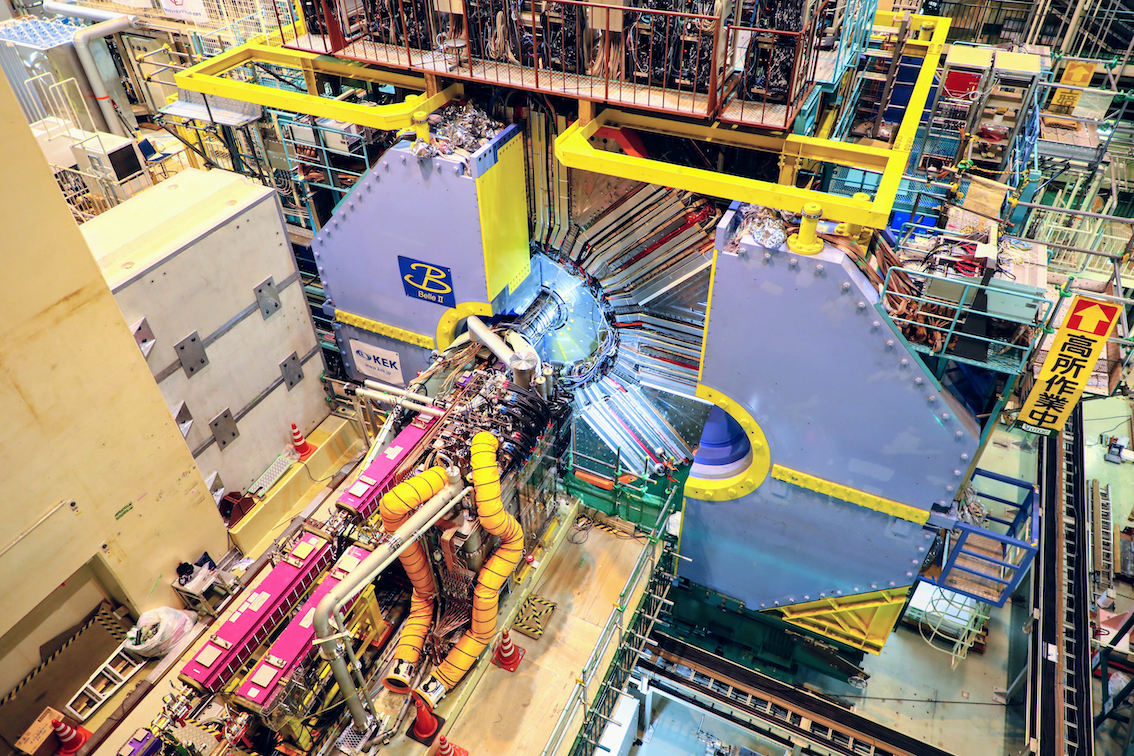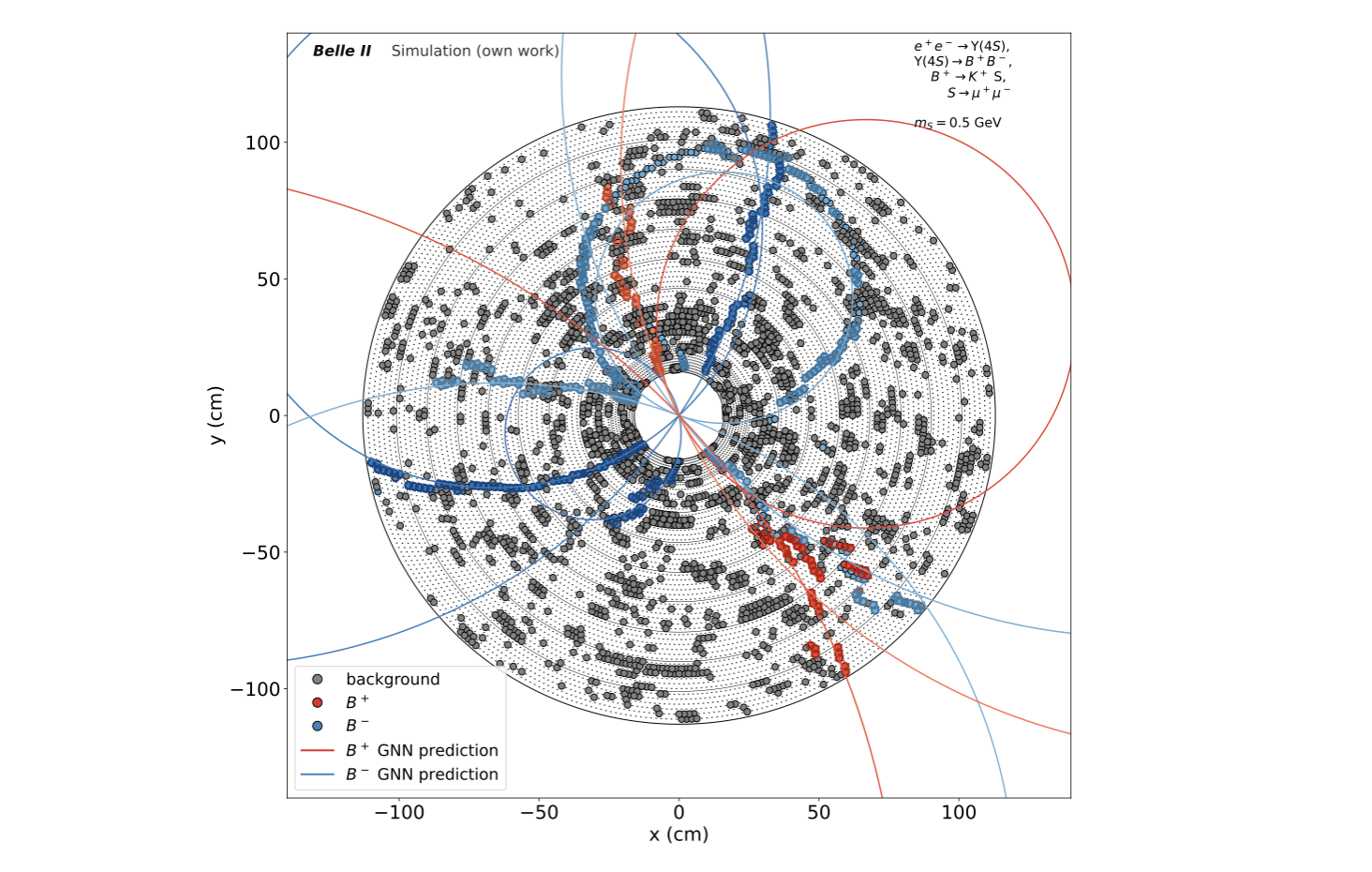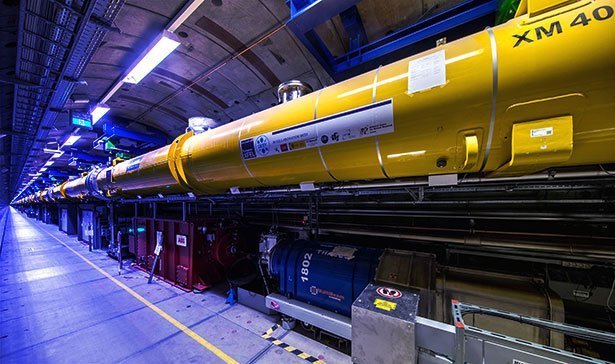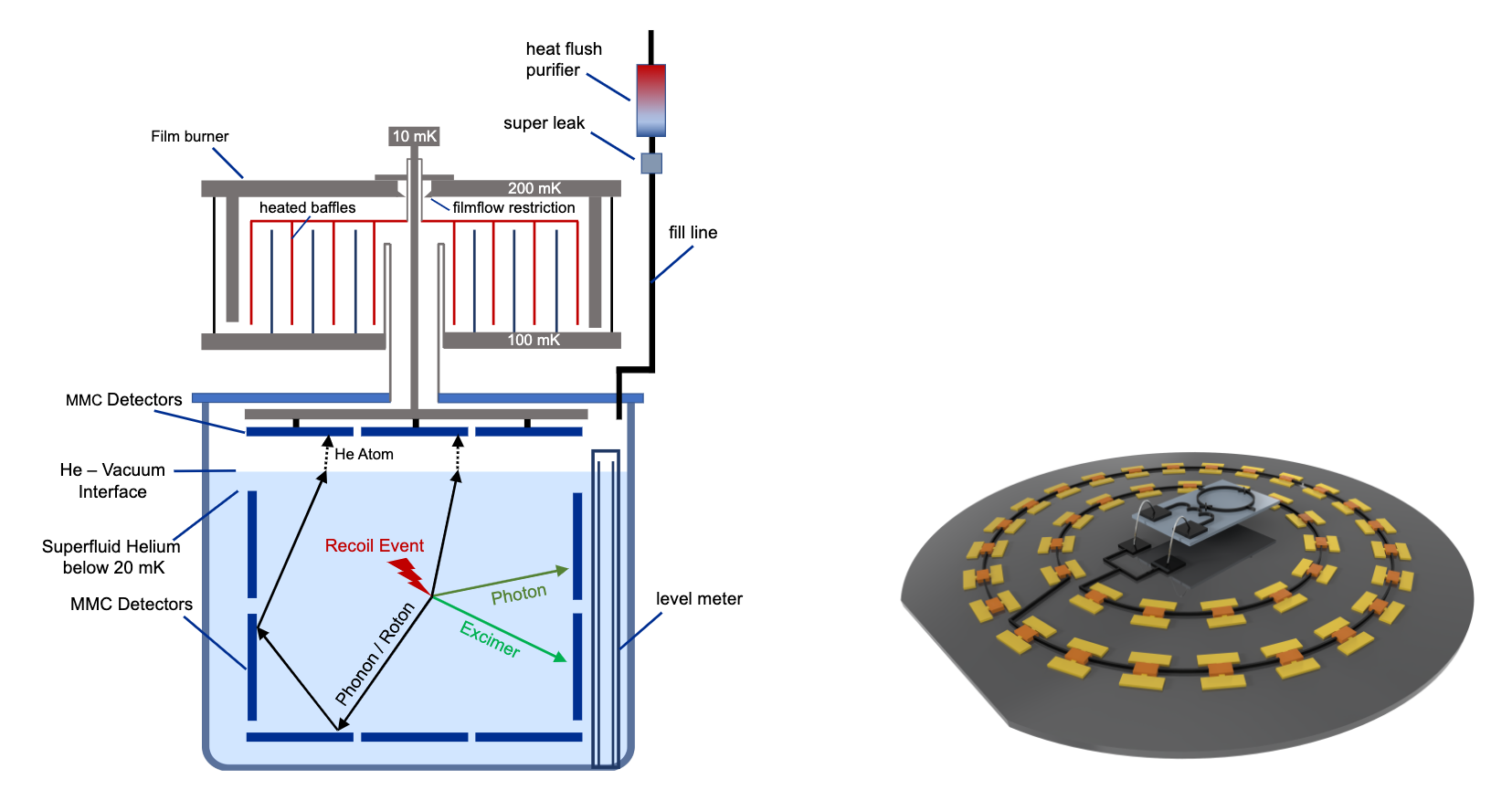Research

Belle II
The Belle II experiment at the KEK laboratory in Tsukuba, Japan, is the successor to the Belle B-factory. More than 100 institutes worldwide contribute to this collaboration, which investigates fundamental questions such as why the universe contains matter but almost no antimatter, and what constitutes dark matter. Our research focuses on flavour physics in rare B-meson decays and on searches for new, weakly interacting particles. These include dark photons that may decay into light dark matter, axion-like particles (ALPs), and long-lived particles (LLPs). My team develops the reconstruction software for the Belle II electromagnetic calorimeter and tracking detectors, and designs real-time algorithms, including machine learning methods. Further information is available at belle2.de.
(Image: © S. Takahashi)

Real-time Machine Learning
We develop real-time machine learning algorithms for track finding and calorimeter clustering in high-energy physics experiments. With FPGA and GPU acceleration, our methods can reconstruct particle tracks and clusters in under one microsecond. We evaluate different machine learning architectures, benchmark their performance on large datasets, and refine existing methods to enhance accuracy and efficiency. We work closely with international partners and industry to drive these developments. Our research supports upgrades of the Belle II detector and delivers essential technologies for future particle physics experiments.

LUXE
LUXE Experiment
LUXE (Laser Und XFEL Experiment) is a new project at DESY and the European XFEL that explores quantum electrodynamics (QED) under extreme conditions, where the usual methods of calculation no longer apply. In the experiment, electrons collide with a powerful laser. These conditions provide a unique opportunity to study how light and matter behave in regimes never tested before.
Our group works on the LUXE-NPOD (“New Physics at an Optical Dump”) subsystem, which uses a beam of high-energy photons created in the initial collisions to search for new, very weakly interacting particles. A particular focus is on axion-like particles (ALPs), which are candidates for physics beyond the Standard Model and may also be linked to the nature of dark matter.
Further information is available at luxe.desy.de.
(Image: © D. Nölle/DESY)

DELight
To reach ultra-low detection thresholds necessary to probe unprecedentedly low Dark Matter masses, target material alternatives and novel detector designs are essential. One such target material is superfluid He-4 which has the potential to probe so far uncharted light Dark Matter parameter space at sub-GeV masses. The new "Direct search Experiment for Light dark matter", DELight, will be using superfluid helium as active target, instrumented with magnetic micro-calorimeters. It is being designed to reach sensitivity to masses well below 100 MeV in Dark Matter-nucleus scattering interactions. More information: Proceedings of the 14th IDM conference (2022).